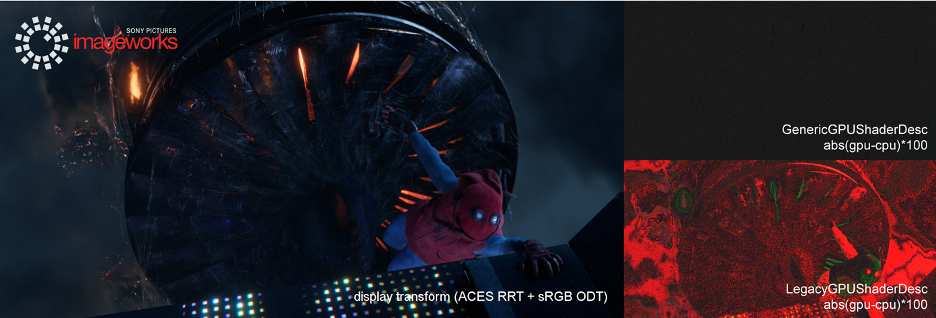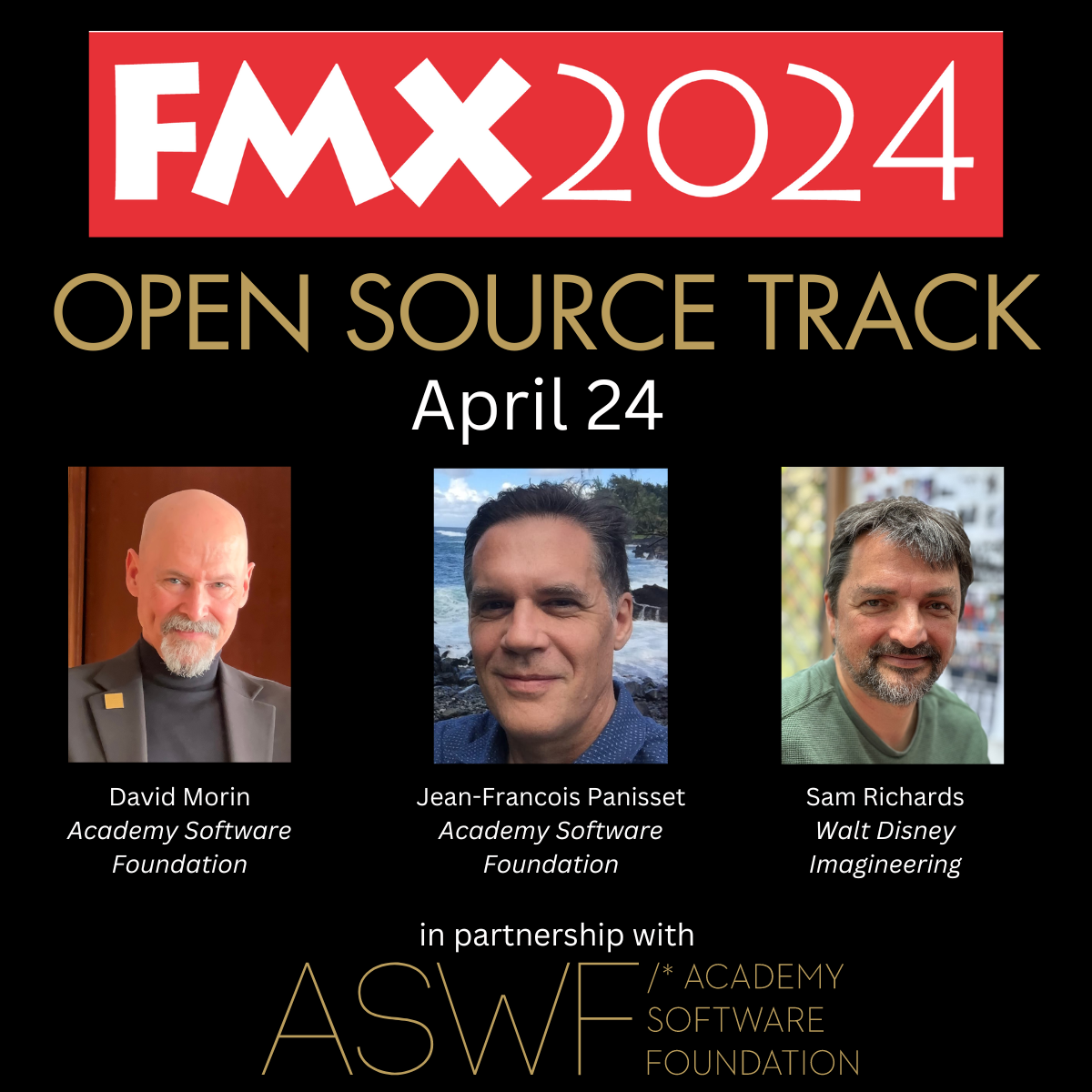New features include a new GPU renderer, a native implementation of ACES (Academy Color Encoding System), an improved user experience, and processing improvements.
The Academy Software Foundation (ASWF), a collaborative effort to advance open source software development in the motion picture and media industries, today announced that OpenColorIO version 2 (OCIO v2) is now available for developers to start integrating into their applications.
OpenColorIO is an industry standard for consistent color management across VFX and animation pipelines and has been used on hundreds of feature film productions. OCIO v2 is the culmination of years of development, led by three full-time Autodesk engineers with input from color science teams across VFX and animation studios and product vendors including Sony Pictures Imageworks, Epic Games, Netflix, DNEG, Framestore, Industrial Light & Magic, Weta Digital, and others. New features include a new GPU renderer, native implementation of ACES (Academy Color Encoding System), an improved user experience, and processing improvements
“OpenColorIO touches nearly every pixel of every visual effects frame in most major motion pictures, so it’s essential that the project meets and exceeds the needs of color scientists, artists, and users who craft these works of art every day,” said Michael Dolan, Senior Pipeline Developer at Epic Games and Chair of the OpenColorIO Technical Steering Committee (TSC). “We worked closely with the OCIO user community to ensure that the new features and improvements in OpenColorIO v2 will address real production needs while maintaining the simplicity and flexibility that users are familiar with.”
Major enhancements in OpenColorIO v2 include:
- Native implementation of ACES, replacing the requirement for finite LUT files with precise algorithms.
- Full read and write support for the Academy/ASC Common LUT Format (CLF).
- All OCIO transforms can now be losslessly serialized for improved reproducibility of color pipelines between studios and vendors.
- A new GPU renderer that matches the CPU result and may be used to produce final frames.
- A better user experience for artists, allowing config authors to organize color spaces by category, hide color spaces, and define hierarchical menus.
- All transforms, including 3d-LUTs, may now be inverted.
- New transforms provide precise implementations of common camera and display encodings, and provide a complete set of building blocks for implementing complex color transforms without the use of external files.
- New command-line tools make it easier to analyze and troubleshoot color issues.
- A new website and documentation make it easier to learn and faster to find the information you need.
GPU now matches CPU results (no more baking!)

Image Credit: Spider-Man: Homecoming. ©2017 CTMG, Inc. All rights reserved.
“The visual effects industry has changed considerably since the introduction of OpenColorIO v1 ten years ago, including the wide adoption of ACES and a higher demand for leveraging GPUs for final pixels,” said Doug Walker, Technology Lead for Color Science at Autodesk and Chief Architect on the OpenColorIO TSC. “With those trends in mind, we re-engineered core components of OpenColorIO with version 2 to provide solutions for these changes, drawing on the latest color science and software engineering techniques, writing hundreds of new CPU and GPU unit-tests to ensure reliability, and adding a new Continuous Integration (CI) system and upgraded cmake scripts to ease development. Color experts may now author pipelines that are easier to use for artists, are more accurate, and are easier to maintain.”
OpenColorIO v2 is currently available for product developers to download and start integrating here. The official v2 release will be available towards the end of 2020, after a four month period of bug-fixing and refinement of features based on developer feedback and testing. OCIO v2 will also be in the VFX Reference Platform for calendar year 2021.
Open Source Days 2020
The Academy Software Foundation is hosting Open Source Days on August 19-20. The free, virtual event brings together the motion picture industry’s open source community to collaborate and learn about open source software for visual effects, animation, and content creation. Attendees will hear from popular open source projects including ACES, VFX Reference Platform, MaterialX, OpenColorIO, OpenCue, OpenEXR, OpenVDB, OpenTimelineIO and Open Shading Language. View the schedule and register for the event at aswf.io/opensourcedays.
###
About Academy Software Foundation
Developed in partnership by the Academy of Motion Picture Arts and Sciences and the Linux Foundation, the Academy Software Foundation was created to ensure a healthy open source community by providing a neutral forum for open source software developers in the motion picture and broader media industries to share resources and collaborate on technologies for image creation, visual effects, animation and sound. The Academy Software Foundation is home to OpenVDB, OpenColorIO, OpenEXR, OpenCue, OpenTimelineIO, and Open Shading Language. For more information about the Academy Software Foundation, visit https://www.aswf.io/.
Media Inquiries
Emily Olin
Academy Software Foundation
eolin@linuxfoundation.org


